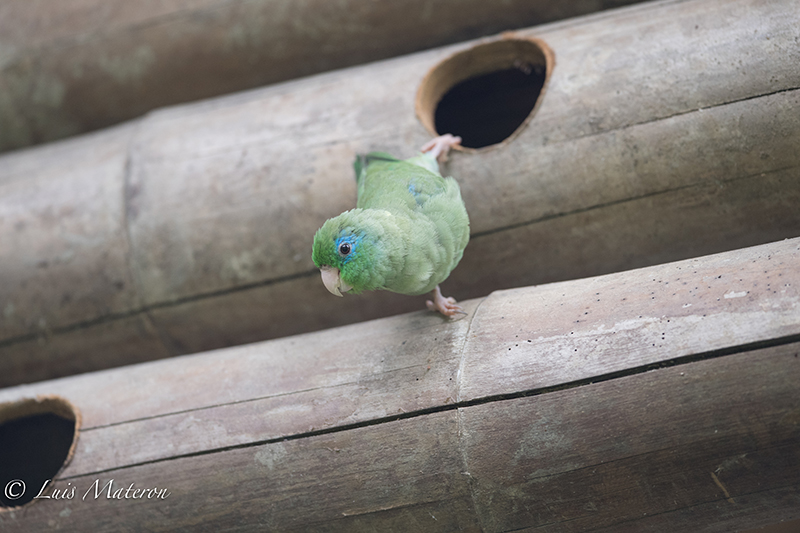SPECTACLED PARROLET
PERIQUITO DE ANTEOJOS
Forpus conspiciatus
The Spectacled Parrolet (Forpus conspiciatus) shows a bright green head and a gray-green breast and underparts. The eyes are dark brown with a bright blue ring around them. Males' blue rings extend further behind the eyes. The strong beak of ivory color and light peach feet. The parrotlet is dimorphic in which males have a blue ring around each eye, with a purple-blue coloration on the lower back, rump, leading edge of wing, primary and secondary coverts, secondaries, and underwing coverts and axillaries; on the other hand, females present a bright emerald ring around each eye. Their feet show two toes facing forward and two facing backward. Weigh about 30 g (1.1 oz). Natural habitats include forest edges, shrub areas, heavily degraded forests and low-density woodland. Green and blue coloring helps these parrotlets camouflage with the tropical trees in their habitats. In the wild, they feed on seeds, nuts, leaves, berries, cactus, seed of leguminous trees, and fruit. They may feed on small insects. These birds are highly social and live in small flocks, but can be seen in large flocks of up to 100 individuals on clay mounds eating clay to get calcium as a mineral source.
El Periquito de Anteojos (Forpus conspiciatus) es principalmente verde, más claro y mas amarillento debajo, región ocular azul, coberturas alares superiores e inferiores y rabadillas, azul violeta; superficie inferior de las rémiges verde azuloso. El macho se distingue de otros machos del género Forpus por el azul alrededor del ojo. En el campo de la hembra no se distingue de otras hembras Forpus excepto por el area de distribución. La hembra es completamente verde pero no azul, presenta un color verde esmeralda a alrededor de los ojos, frente y rabadilla. Pico color marfil. Pesa 30 g. Su color verde y azul les ayuda a camuflarse en la naturaleza. Se alimentan de insectos, semillas y fruta. Son muy sociales y se pueden encontrar en grupos hasta de 100 individuos. Visitan áreas cultivadas secas y semiabiertas, montes y claros con árboles dispersos. Comen arcilla para obtener minerals tales como el calcio.

LAM_4153

LAM_4154
